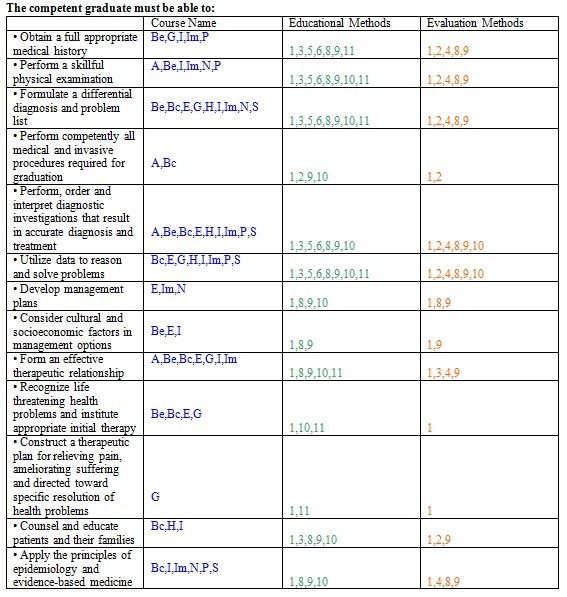The widening gap between advances in basic biology and their relevance to the clinical application presents a challenge for medical educators. As investigation methods in basic sciences complicate, and with the exponential growth of the knowledge base, clinicians find difficulties in applying scientific advances to the treatment of actual disease. This calls for the replacement of the traditional clinician-scientist with a multidisciplinary task force model. However, most basic scientists have little knowledge of pathobiology and clinical medicine, rendering them unprepared for this task. Thus, it is not surprising that many innovative programs in medical education deal with defining the role of basic science education for medical students, as well as exposing graduate students to biomedical research.
The Faculty of Health Sciences in Ben-Gurion University of the Negev in Beer-Sheva, Israel, has been innovative in its medical education concepts ever since its foundation by Professor Moshe Prywes in 1974. The need to integrate basic sciences education with the clinical sciences throughout the curriculum was a major target. However, until now we were successful mostly in introducing clinical studies to the “pre-clinical” years. The early clinical exposure of the students beginning in the first week of medical school has gained increasing acceptance over the years, but how and when to teach basic sciences during the “clinical years” remains an unresolved issue. Graduate students in the faculty of health sciences enter with a general biology background, but their exposure to pathobiology and clinical medicine during their graduate studies is limited. Consequently, only students
who participate in exclusive programs such as MD-PhD have the opportunity to “bridge the gaps?, but they currently represent less than 5% of medical students in our institution. In this article we would like to report our experience in trying to implement a clinical – basic science integrative course for senior medical students and graduate students, aimed at addressing these issues.
We defined the following goals for the course: 1. it should demonstrate the interrelations between the basic and clinical sciences, and the ways by which this cross-talk promotes medical progress; 2. it should emphasize concepts rather than information; and 3. it should enable the implementation of individual and group self learning methods.
On the basis of these concepts, and taking into account our teaching resources, Diabetes Mellitus was chosen as the general topic of the course. Senior medical students are likely to have been exposed extensively to this common disease and are probably aware of significant questions concerning its pathophysiology and therapeutics. Graduate students are likely to find interest in a disease which combines extensive research efforts in various basic science disciplines. Furthermore, diabetes mellitus is an example of a disease whose treatment is very likely to improve dramatically over the next decade as a result of intensive multidisciplinary research.
This course was introduced simultaneously as an elective course for senior medical students and as a regular graduate student’s course. Interestingly, among senior medical students this course was not chosen as a top priority elective course. We did not ascertain whether this was a result of student’s perception of the importance of basic sciences, or to a tendency to choose a “practical?, clinical elective related to future specialization plans. In contrast to the lack of response among most medical students, the course generated interest among many graduate students.
Approximately 40% of the applicants were medical students taking a year off clinical studies in order to complete an MSc degree. The basic structure of the course when planned as an elective course for senior medical students was a 2 week period, beginning with 1-2 days of overview lectures intended to introduce the main topics of the course, which are major clinical questions in the treatment of diabetes, (why currently used methods of insulin treatment do not cure type I diabetes, what is the pathogenesis and future treatment of insulin resistance states, can type 1 diabetes be prevented and how, etc.). The next 6 days are dedicated mostly to self learning and preparation of the final projects: in this part of the course each pair of students receives a project assignment, consisting of a specific topic, names of two tutors – a basic scientist and a clinician, and references which include review article, original papers, as well as textbook references for refreshment of basic concepts. For example, one project assignment for the “type 1 prevention” question is “the role of a certain antigen in the pathogenesis of type 1 diabetes”. The references enable the student to concentrate on basic immunological concepts (antigen presentation, T-cell activation, autoimmunity etc.), or more on the original articles, according to individual preferences and fields of interest. This “freedom” is limited by a minimum requirement of 3 original, basic science articles. The last two days are dedicated to oral presentations of the projects and panel discussions with the tutors. This original program was modified slightly into a semesterial course, which is described in detail in the Appendix 1.
Presently, we are unable to provide evaluation of the course as it was only launched in the spring 1996 semester, although feedback from both students and faculty are positive (Appendix 2). We hope that in the near future we will be able to implement a similarly designed course for joint participation by senior medical students and graduate students, perhaps as part of a clinical clerkship. Undoubtedly, a combined effective learning experience shared by medical and graduate students could by itself promote interdisciplinary communication between clinicians and basic scientists. Moreover, the structure and basic concepts presented by this course could be extended to many other medical issues. We believe strongly that continuing basic science education for medical students should be based on well defined clinical problems using guided individual and group learning.
STRAIGHT OUT OF THE FORTUNE COOKIE JAR …
If liberty means anything at all it means the right to tell people what they do not want to hear
George Orwell